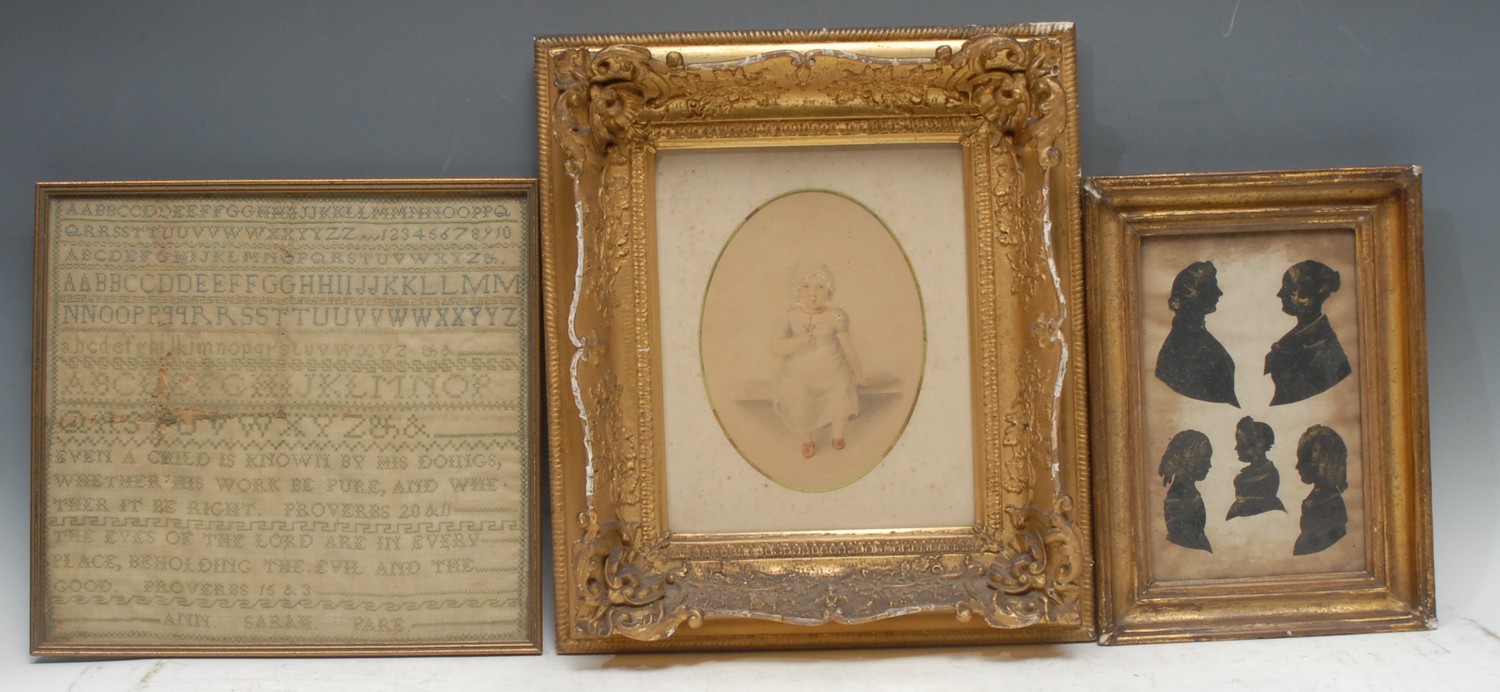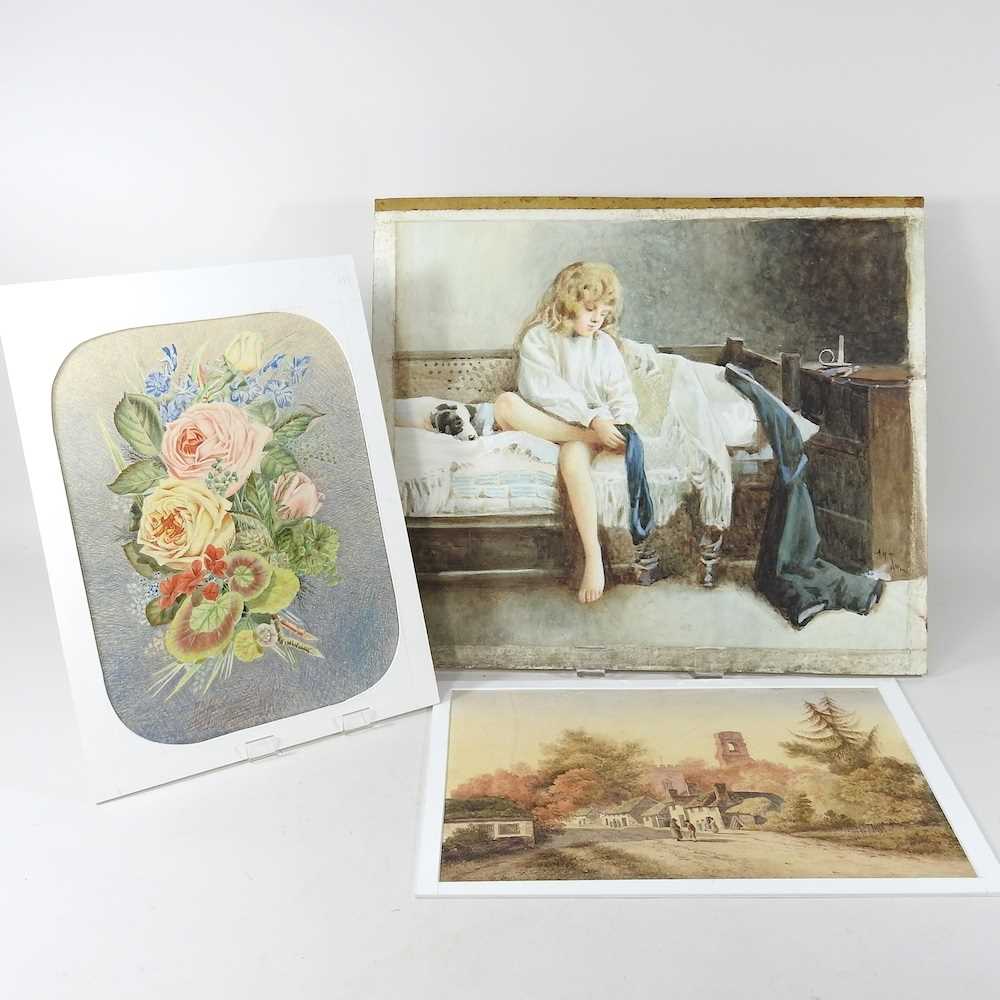ENGLISH SCHOOL (19TH CENTURY) Portrait of an Officer with Groom and Horse Oil on panel, 76 x 58cm Believed to be Lieutenant General William Thornton (1779-1840) who took part in the Battle of New Orleans, 1815. Provenance: Collection of the Peck Family, Prehen House, Derry The Corps of Colonial Marines was division of British Marines created from former slaves for service in the Americas, at the direction of senior Royal Navy commander Alexander Cochrane. In this painting, the black figure's white tunic is concurrent with the light-coloured uniform worn by the Colonial Marines. The first group of Corps served in the Caribbean between 1808 - 1810. With the Mutiny Act 1807, all former slaves in the British Army were emancipated, and as such any subsequent recruited slaves were considered free on enlistment. The second more substantial corps served between 1814 - 1816 mostly stationed on Apalachicola River in northwest Florida. On 2nd April 1814, Cochrane issued a proclamation to all persons wishing to emigrate, that they would be welcomed at any British outpost and if seeking sanctuary could enlist in His Majesty's Forces. The actions of the British in establishing the force caused much controversy at the time and angered the slave-owning society of the United States who feared the military threat but also the potential for inducing a revolt amongst their enslaved workers. The Battle of New Orleans saw the British troops decisively defeated by the American armies, despite their advantage in terms of numbers, training and experience. With the British withdrawal, the main post in Florida was disbanded and a number of men travelled to Bermuda with the British as part of a refugee group which re-joined the main body of the Colonial Marines. The British army had to pay substantial reparations to the slave owners in the United States as compensations for the loss of their earnings. ENGLISH SCHOOL (19TH CENTURY) Portrait of an Officer with Groom and Horse Oil on panel, 76 x 58cm Believed to be Lieutenant General William Thornton (1779-1840) who took part in the Battle of New Orleans, 1815. Provenance: Collection of the Peck Family, Prehen House, Derry The Corps of Colonial Marines was division of British Marines created from former slaves for service in the Americas, at the direction of senior Royal Navy commander Alexander Cochrane. In this painting, the black figure's white tunic is concurrent with the light-coloured uniform worn by the Colonial Marines. The first group of Corps served in the Caribbean between 1808 - 1810. With the Mutiny Act 1807, all former slaves in the British Army were emancipated, and as such any subsequent recruited slaves were considered free on enlistment. The second more substantial corps served between 1814 - 1816 mostly stationed on Apalachicola River in northwest Florida. On 2nd April 1814, Cochrane issued a proclamation to all persons wishing to emigrate, that they would be welcomed at any British outpost and if seeking sanctuary could enlist in His Majesty's Forces. The actions of the British in establishing the force caused much controversy at the time and angered the slave-owning society of the United States who feared the military threat but also the potential for inducing a revolt amongst their enslaved workers. The Battle of New Orleans saw the British troops decisively defeated by the American armies, despite their advantage in terms of numbers, training and experience. With the British withdrawal, the main post in Florida was disbanded and a number of men travelled to Bermuda with the British as part of a refugee group which re-joined the main body of the Colonial Marines. The British army had to pay substantial reparations to the slave owners in the United States as compensations for the loss of their earnings.
ENGLISH SCHOOL (19TH CENTURY) Portrait of an Officer with Groom and Horse Oil on panel, 76 x 58cm Believed to be Lieutenant General William Thornton (1779-1840) who took part in the Battle of New Orleans, 1815. Provenance: Collection of the Peck Family, Prehen House, Derry The Corps of Colonial Marines was division of British Marines created from former slaves for service in the Americas, at the direction of senior Royal Navy commander Alexander Cochrane. In this painting, the black figure's white tunic is concurrent with the light-coloured uniform worn by the Colonial Marines. The first group of Corps served in the Caribbean between 1808 - 1810. With the Mutiny Act 1807, all former slaves in the British Army were emancipated, and as such any subsequent recruited slaves were considered free on enlistment. The second more substantial corps served between 1814 - 1816 mostly stationed on Apalachicola River in northwest Florida. On 2nd April 1814, Cochrane issued a proclamation to all persons wishing to emigrate, that they would be welcomed at any British outpost and if seeking sanctuary could enlist in His Majesty's Forces. The actions of the British in establishing the force caused much controversy at the time and angered the slave-owning society of the United States who feared the military threat but also the potential for inducing a revolt amongst their enslaved workers. The Battle of New Orleans saw the British troops decisively defeated by the American armies, despite their advantage in terms of numbers, training and experience. With the British withdrawal, the main post in Florida was disbanded and a number of men travelled to Bermuda with the British as part of a refugee group which re-joined the main body of the Colonial Marines. The British army had to pay substantial reparations to the slave owners in the United States as compensations for the loss of their earnings. ENGLISH SCHOOL (19TH CENTURY) Portrait of an Officer with Groom and Horse Oil on panel, 76 x 58cm Believed to be Lieutenant General William Thornton (1779-1840) who took part in the Battle of New Orleans, 1815. Provenance: Collection of the Peck Family, Prehen House, Derry The Corps of Colonial Marines was division of British Marines created from former slaves for service in the Americas, at the direction of senior Royal Navy commander Alexander Cochrane. In this painting, the black figure's white tunic is concurrent with the light-coloured uniform worn by the Colonial Marines. The first group of Corps served in the Caribbean between 1808 - 1810. With the Mutiny Act 1807, all former slaves in the British Army were emancipated, and as such any subsequent recruited slaves were considered free on enlistment. The second more substantial corps served between 1814 - 1816 mostly stationed on Apalachicola River in northwest Florida. On 2nd April 1814, Cochrane issued a proclamation to all persons wishing to emigrate, that they would be welcomed at any British outpost and if seeking sanctuary could enlist in His Majesty's Forces. The actions of the British in establishing the force caused much controversy at the time and angered the slave-owning society of the United States who feared the military threat but also the potential for inducing a revolt amongst their enslaved workers. The Battle of New Orleans saw the British troops decisively defeated by the American armies, despite their advantage in terms of numbers, training and experience. With the British withdrawal, the main post in Florida was disbanded and a number of men travelled to Bermuda with the British as part of a refugee group which re-joined the main body of the Colonial Marines. The British army had to pay substantial reparations to the slave owners in the United States as compensations for the loss of their earnings.







.jpg)







Testen Sie LotSearch und seine Premium-Features 7 Tage - ohne Kosten!
Lassen Sie sich automatisch über neue Objekte in kommenden Auktionen benachrichtigen.
Suchauftrag anlegen